| Zeitschrift Umělec 2002/4 >> Relational aesthetics (part 1) | Übersicht aller Ausgaben | ||||||||||||
|
|||||||||||||
Relational aesthetics (part 1)Zeitschrift Umělec 2002/401.04.2002 Nicolas Bourriaud | theory | en cs |
|||||||||||||
|
Relational Aesthetics
Relational form Artistic activity is a game, whose forms, patterns and functions develop and evolve according to periods and social contexts; it is not an immutable essence. It is the critic’s task to study this activity in the present. A certain aspect of the programme of modernity has been fairly and squarely wound up (and not, let us hasten to emphasise in these bourgeois times, the spirit informing it). This completion has drained the criteria of aesthetic judgement we are heir to of their substance, but we go on applying them to present-day artistic practices. The new is no longer a criterion, except among latter-day detractors of modern art who, where the much-execrated present is concerned, cling solely to the things that their traditionalist culture has taught them to loathe in yesterday’s art. In order to invent more effective tools and more valid viewpoints, it behoves us to understand the changes nowadays occurring in the social arena, and grasp what has already changed and what is still changing. How are we to understand the types of artistic behaviour shown in exhibitions held in the 1990s, and the lines of thinking behind them, if we do not start out from the same situation as the artists? Contemporary artistic practice and its cultural plan The modern political era, which came into being with the Enlightenment, was based on the desire to emancipate individuals and people. The advances of technologies and freedoms, the decline of ignorance, and improved working conditions were all billed to free humankind and help to usher in a better society. There are several versions of modernity, however. The 20th century was thus the arena for a struggle between two visions of the world: a modest, rationalist conception, hailing from the 18th century, and a philosophy of spontaneity and libera-tion through the irrational (Dada, Surrealism, the Situationists), both of which were opposed to authoritarian and utilitarian forces eager to gauge human relations and subjugate people. Instead of culminating in hoped-for emancipation, the advances of technologies and “Reason” made it hat much easier to exploit the South of planet earth, blindly replace human labour by machines, and set up more and more sophisticated subjugation techniq-ues, all through a general rationalisation of the production process. So the modern emancipation plan has been substituted by countless forms of melancholy. Twentieth century avant-garde, from Dadaism to the Situationist Inter- national, fell within the tradition of this modern project (changing culture, attitudes and mentalities, and individual and social living conditions), but it is as well to bear in mind that this project was already there before them, differing from their plan in many ways. For modernity cannot be reduced to a rationalist teleology, any more than it can to political messianism. Is it possible to disparage the desire to improve living and working conditions, on the pretext of the bankruptcy of tangible attempts to do as much-shored up by totalitarian ideologies and naive visions of history? What used to be called the avant-garde has, needless to say, developed from the ideological swing of things offered by modern rationalism; but it is now re-formed on the basis of quite different philosophical, cultural and social presuppositions. It is evident that today’s art is carrying on this fight, by coming up with perceptive, experimental, critical and participatory models, veering m the direction indicated by Enlightenment philosophers, Proudhon, Marx, the Dadaists and Mondriaan. If opinion is striving to acknowledge the legitimacy and interest of these experiments, this is because they are no longer presented like the precursory phenomena of an inevitable historical evolution. Quite to the contrary, they appear fragmentary and isolated, like orphans of an overall view of the world bolstering them with the clout of an ideology. It is not modernity that is dead, but its idealistic and teleological version. Today’s tight for modernity is being waged in the same terms as yesterday’s, barring the fact that the avant-garde has stopped patrolling like some scout, the troop having come to a cautious standstill around a bivouac of certainties. Art was intended to prepare and announce a future world: today it is modelling possible universes. The ambition of artists who include their practice within the slipstream of historical modernity is to repeat neither its forms nor its claims, and even less assign to art the same functions as it. Their task is akin to the one that Jean-François Lyotard allocated to post-modern architecture, which “is condemned to create a series of minor modifications in a space whose modernity it inherits, and abandon an overall reconstruction of the space inhabited by humankind.”1 What is more, Lyotard seems to half-bemoan this state of affairs: he defines it negatively, by using the term “condemned.” And what, on the other hand, if this “condemnation” represented the historical chance whereby most of the art worlds known to us managed to spread their wings, over the past ten years or so? This “chance” can be summed up in just a few words: learning to inhabit the world in a better way, instead of trying to construct it based on a preconceived idea of historical evolution. Otherwise put, the role of artworks is no longer to form imaginary and utopian realties, but to actually be ways of living and models of action within the existing real, whatever the scale chosen by the artist. Althusser said that one always catches the world’s train on the move; Deleuze, that “grass grows from the middle” and not the bottom or the top. The artist dwells in the circumstances the present offers him, so as to turn the setting of his life (his links with the physical and conceptual world) into a lasting world. He catches the world on the move: he is a tenant of culture, to borrow Michel de Certeau’s expression.2 Nowadays, modernity extends into the practices of cultural do-it-yourself and recycling, into the invention of the everyday and the development of time lived, which are not objects less deserving of attention and examination than Messianistic utopias and the formal “novelties” that typified modernity yesterday. There is nothing more absurd either than the assertion that contemporary art does not involve any political project, or than the claim that its subversive aspects are not based on any theoretical terrain. Its plan, which has just as much to do with working conditions and the conditions in which cultural objects are produced, as with the changing forms of social life, may nevertheless seem dull to minds formed in the mould of cultural Darwinism. Here, then, is the time of the “dolce utopia,” to use Maurizio Cattelan’s phrase… Artwork as social interstice The possibility of a relational art (an art taking as its theoretical horizon the realm of human interactions and its social context, rather than the assertion of an independent and private symbolic space), points to a radical upheaval of the aesthetic, cultural and political goals introduced by modern art. To sketch a sociology of this, this evolution stems essentially from the birth of a world-wide urban culture, and from the extension of this city model to more or less all cultural phenomena. The general growth of towns and cities, which took off at the end of the Second World War, gave rise not only to an extraordinary upsurge of social exchanges, but also to much greater individual mobility (through the development of networks and roads, and telecommunications, and the gradual freeing-up of isolated places, going with the opening-up of attitudes). Because of the crampedness of dwelling spaces in this urban world, there was, in tandem, a scaling-down of furniture and objects, now emphasising a greater manoeuvrability. If, for a long period of time, the artwork has managed to come across as a luxury, lordly item in this urban setting (the dimensions of the work, as well as those of the apartment, helping to distinguish between their owner and the crowd), the development of the function of artworks and the way they arc shown attest to a growing urbanisation of the artistic experiment. What is collapsing before our very eyes is nothing other than this falsely aristocratic conception of the arrangement of works of art, associated with the feeling of territorial acquisition. In other words, it is no longer possible to regard the contemporary work as it space to be walked through (the “owner’s tour” is akin to the collector’s). It is henceforth presented as a period of time to be lived through, like an opening to unlimited discussion. The city has ushered in and spread the hands-on experience: it is the tangible symbol and historical setting of the state of society, that “state of encounter imposed on people,” to use Althusser’s expression,3 contrasting with that dense and “trouble-free” jungle which the natural state once was, according to Jean-Jacques Rousseau, a jungle hampering any lasting encounter. Once raised to the power of an absolute rule of civilisation, this system of intensive encounters has ended up producing linked artistic practices: an art form where the substrate is formed by inter-subjectivity, and which takes being-together as a central theme, the “encounter” between beholder and picture, and the collective elaboration of meaning. Let us leave the matter of the historicity of this phenomenon on one side: art has always been relational in varying degrees, i.e. a factor of sociability and a founding principle of dialogue. One of the virtual properties of the image is its power of linkage (Fr. reliance), to borrow Michel Maffesoli’s term: flags, logos, icons, signs, all produce empathy and sharing, and all generate boncd.4 Art (practices stemming from painting and sculpture which come across in the form of an exhibition) turns out to be particularly suitable when it comes to expressing this hands-on civilisation, because it tightens the space of relations, unlike TV and literature which refer each individual person to his or her space of private consumption, and also unlike theatre and cinema which bring small groups together before specific, unmistakable images. Actually, there is no live comment made about what is seen (the discussion time is put off until after the show). At an exhibition, on the other hand, even when inert forms are involved, there is the possibility of an immediate discussion, in both senses of the term. I see and perceive, I comment, and I evolve in a unique space and time. Art is the place that produces a specific sociability. It remains to be seen what the status of this is in the set of “states of encounter” proposed by the City. How is an art focused on the production of such forms of conviviality capable of re-launching the modern emancipation plan, by complementing it? How does it permit the development of new political and cultural designs? Before giving concrete examples, it is well worth reconsidering the place of artworks in the overall economic system, be it symbolic or material, which governs contemporary society. Over and above its mercantile nature and its semantic value, the work of art represents a social interstice. This interstice term was used by Karl Marx to describe trading communities that elude the capitalist economic context by being removed from the law of profit: barter, merchandising, autarkic types of production, etc. The interstice is a space in human relations which fits more or less harmoniously and openly into the overall system, but suggests other trading possibilities than those in effect within this system. This is the precise nature of the contemporary art exhibition in the arena of representational commerce: it creates free areas, and time spans whose rhythm contrasts with those structuring everyday life, and it encourages an inter-human commerce that differs from the “communication zones” that are imposed upon us. The present-day social context restricts the possibilities of inter-human relations all the more because it creates spaces planned to this end. Automatic public toilets were invented to keep streets clean. The same spirit underpins the development of communication tools, while city streets are swept clean of all manners of relational dross, and neighbourhood relationships fizzle. The general mechanisation of social functions gradually reduces the relational space. Just a few years ago, the telephone wake-up call service employed human beings, but now we are woken up by a synthesised voice… The automatic cash machine has become the transit model for the most elementary of social functions, and professional behaviour patterns are modelled on the efficiency of the machines replacing them, these machines carrying out tasks which once represented so many opportunities for exchanges, pleasure and squabbling. Contemporary art is definitely developing a political project when it endeavours to move into the relational realm by turning it into an issue. When Gabriel Orozco puts an orange on the stalls of a deserted Brazilian market (Crazy Tourist, 1991), or slings a hammock in the MoMA garden in New York (Hamoc en la moma, 1993), he is operating at the hub of “social infra-thinness” (l’inframince social), that minute space of daily gestures determined by the superstructure made up of “big” exchanges, and defined by it. Without any wording, Orozco’s photographs are a documentary record of tiny revolutions in the common urban and semi-urban life (a sleeping bag on the grass, an empty shoebox, etc.). They record this silent, still life nowadays formed by relationships with the other. When Jens Haaning broadcasts funny stories in Turkish through a loudspeaker in a Copenhagen square (Turkish Jokes, 1994), he produces in that split second a micro-community, one made up of immigrants brought together by collective laughter which upsets their exile situation, formed in relation to the work and in it. The exhibition is the special place where such momentary groupings may occur, governed as they are by differing principles. And depending on the degree of participation required of the onlooker by the artist, along with the nature of the works and models of sociability proposed and represented, an exhibition will give rise to a specific “arena of exchange.” And this “arena of exchange,” must be judged on the basis of aesthetic criteria, in other words, by analysing the coherence of its form, and then the symbolic value of the “world” it suggests to us, and of the image of human relations reflected by it. Within this social interstice, the artist must assume the symbolic models he shows. All representation (though contemporary art models more than it represents, and fits into the social fabric more than it draws inspiration therefrom) refers to values that can be transposed into society. As a human activity based on commerce, art is at once the object and the subject of an ethic. And this all the more so because, unlike other activities, its sole function is to be exposed to this commerce. Art is a state of encounter.
01.04.2002
Empfohlene Artikel
|
|||||||||||||
|
04.02.2020 10:17
Letošní 50. ročník Art Basel přilákal celkem 93 000 návštěvníků a sběratelů z 80 zemí světa. 290 prémiových galerií představilo umělecká díla od počátku 20. století až po současnost. Hlavní sektor přehlídky, tradičně v prvním patře výstavního prostoru, představil 232 předních galerií z celého světa nabízející umění nejvyšší kvality. Veletrh ukázal vzestupný trend prodeje prostřednictvím galerií jak soukromým sbírkám, tak i institucím. Kromě hlavního veletrhu stály za návštěvu i ty přidružené: Volta, Liste a Photo Basel, k tomu doprovodné programy a výstavy v místních institucích, které kvalitou daleko přesahují hranice města tj. Kunsthalle Basel, Kunstmuseum, Tinguely muzeum nebo Fondation Beyeler.
|












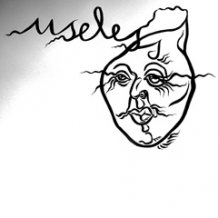






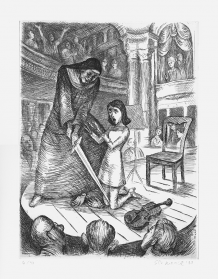




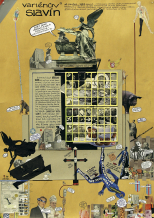
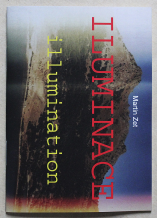

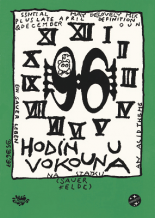


 We Are Rising National Gallery For You! Go to Kyjov by Krásná Lípa no.37.
We Are Rising National Gallery For You! Go to Kyjov by Krásná Lípa no.37.
Kommentar
Der Artikel ist bisher nicht kommentiert wordenNeuen Kommentar einfügen